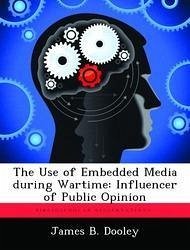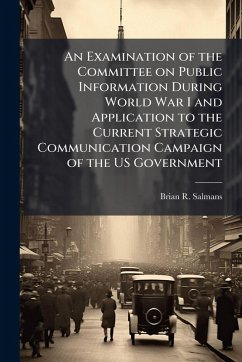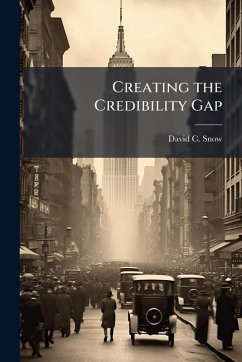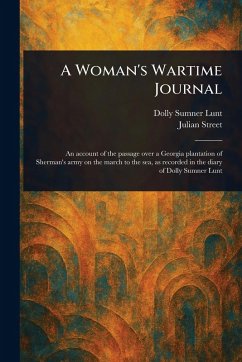
The Use of Embedded Media During Wartime
Influencer of Public Opinion
Versandkostenfrei!
Versandfertig in über 4 Wochen
14,99 €
inkl. MwSt.

PAYBACK Punkte
7 °P sammeln!
During our nation's history, there has been tension between the military and the media over the public's right to know. The practice of embedding media has played a major role in the evolution of the media-military relationship and has served to be a key influencer of public opinion. Using the historical methodology I researched the problem of how the U.S. Military should leverage the media to influence public opinion and help maintain public support for military operations. The use of embedded media in military conflicts is presented chronologically in the paper beginning with Vietnam and end...
During our nation's history, there has been tension between the military and the media over the public's right to know. The practice of embedding media has played a major role in the evolution of the media-military relationship and has served to be a key influencer of public opinion. Using the historical methodology I researched the problem of how the U.S. Military should leverage the media to influence public opinion and help maintain public support for military operations. The use of embedded media in military conflicts is presented chronologically in the paper beginning with Vietnam and ending with Operation Iraqi Freedom (OIF). In the paper I also analyze several advantages and disadvantages of using embedded media during military conflicts and cite instances in past conflicts where the U.S. failed to leverage the news media to influence public opinion. My recommendations will show how the U.S. military should leverage the embedded media to influence public opinion and maintain public support. Friction between the military and the media has always existed, but military leaders and media officials must work together to leverage the "soft" power that embedded media brings to the fight. This work has been selected by scholars as being culturally important, and is part of the knowledge base of civilization as we know it. This work was reproduced from the original artifact, and remains as true to the original work as possible. Therefore, you will see the original copyright references, library stamps (as most of these works have been housed in our most important libraries around the world), and other notations in the work. This work is in the public domain in the United States of America, and possibly other nations. Within the United States, you may freely copy and distribute this work, as no entity (individual or corporate) has a copyright on the body of the work. As a reproduction of a historical artifact, this work may contain missing or blurred pages, poor pictures, errant marks, etc. Scholars believe, and we concur, that this work is important enough to be preserved, reproduced, and made generally available to the public. We appreciate your support of the preservation process, and thank you for being an important part of keeping this knowledge alive and relevant.












![Our Girls in Wartime [microform]: Rhymes Cover Our Girls in Wartime [microform]: Rhymes](https://bilder.buecher.de/produkte/66/66186/66186808n.jpg)